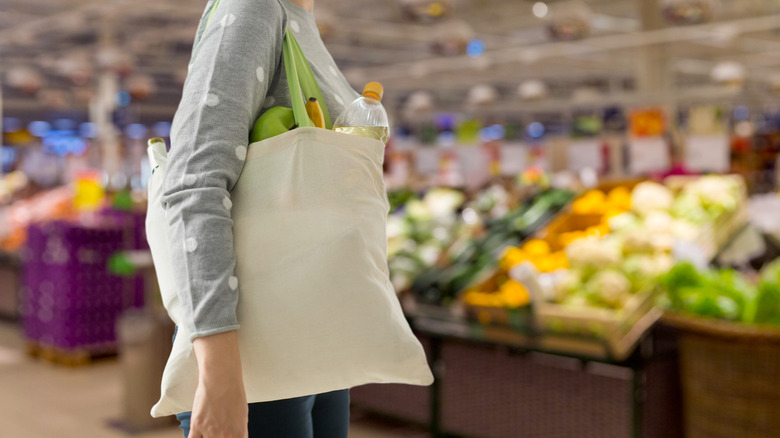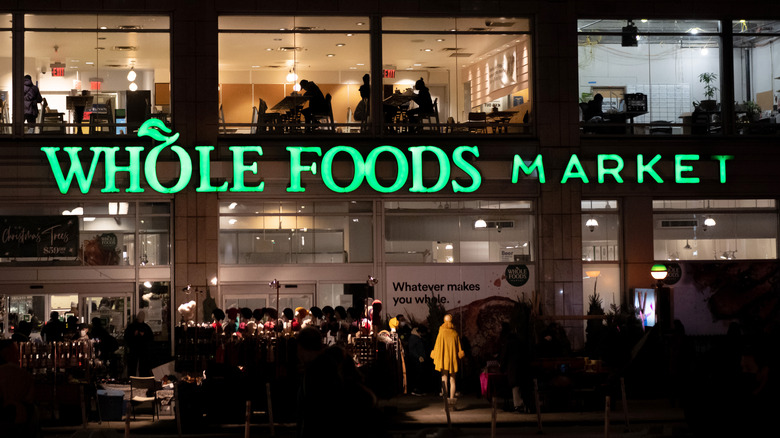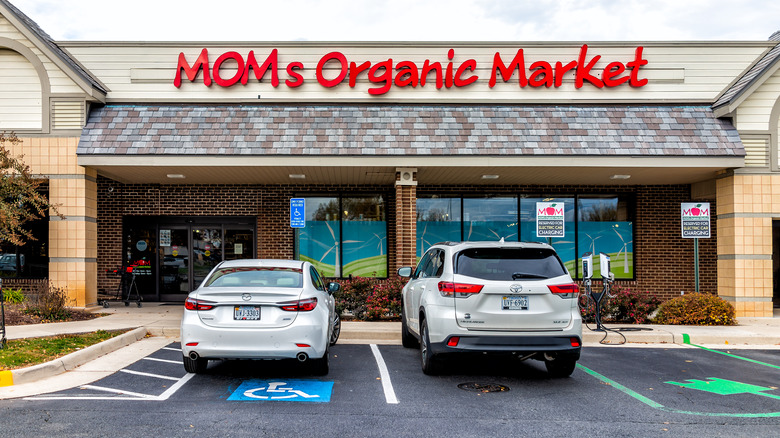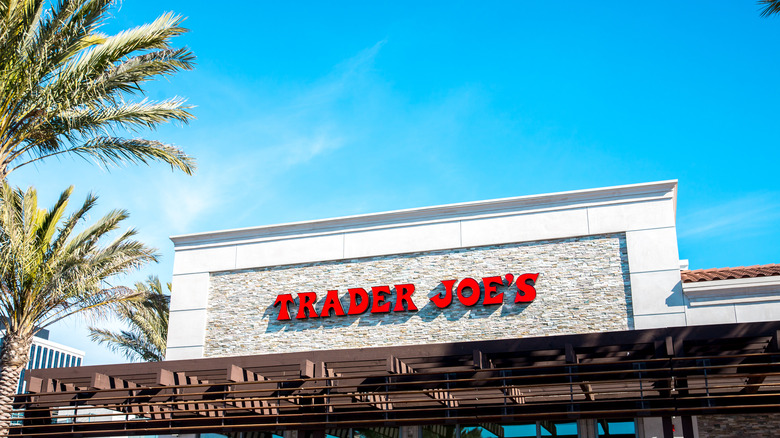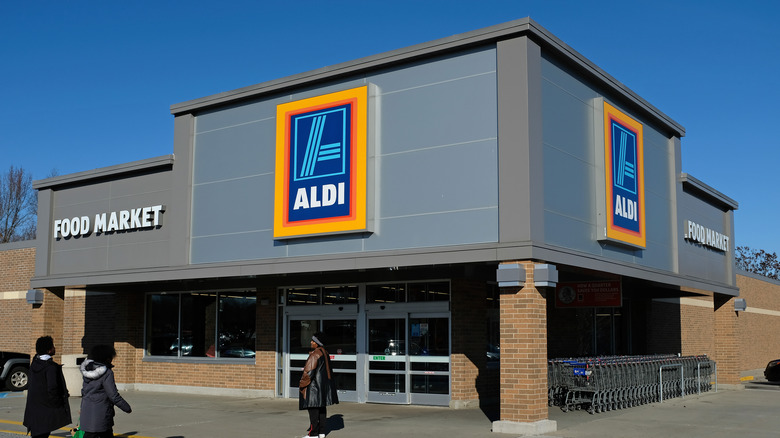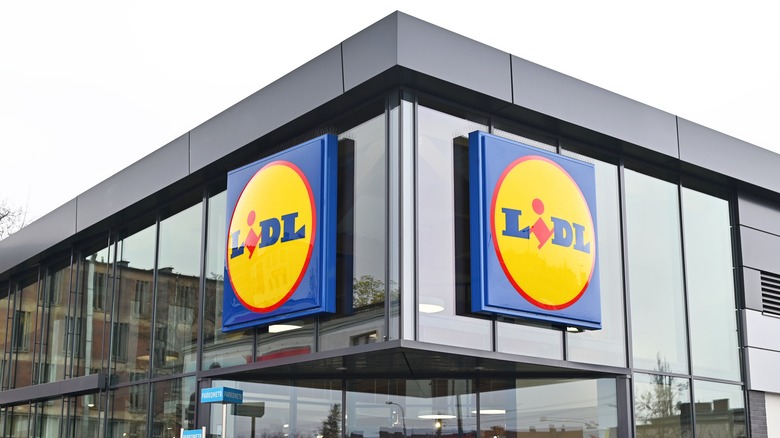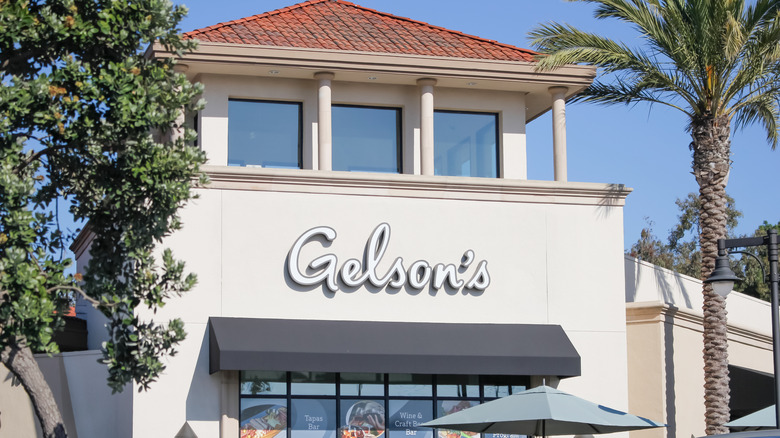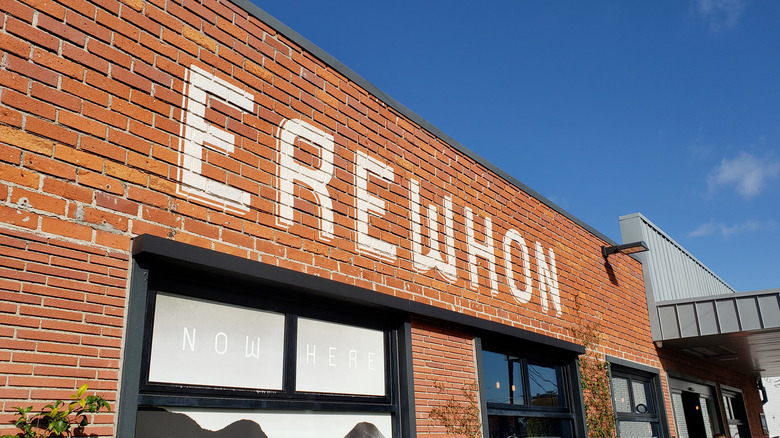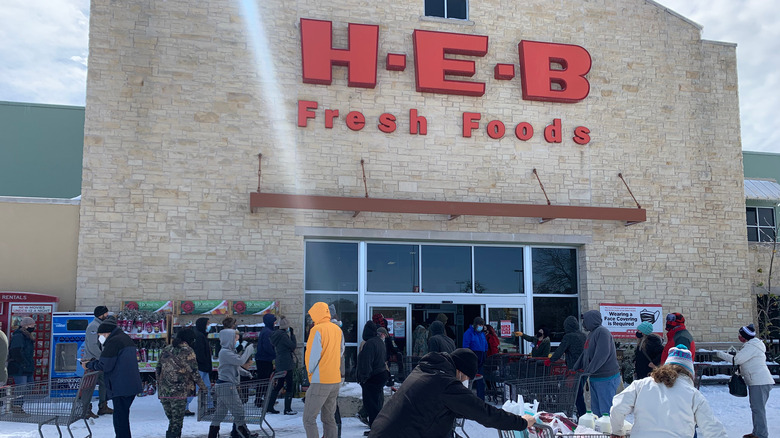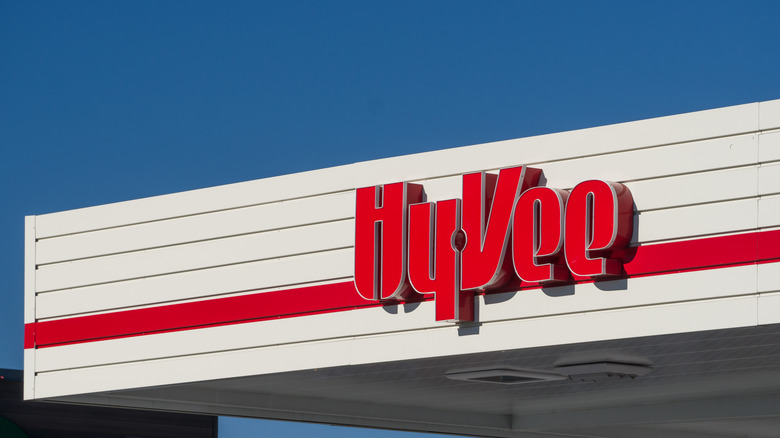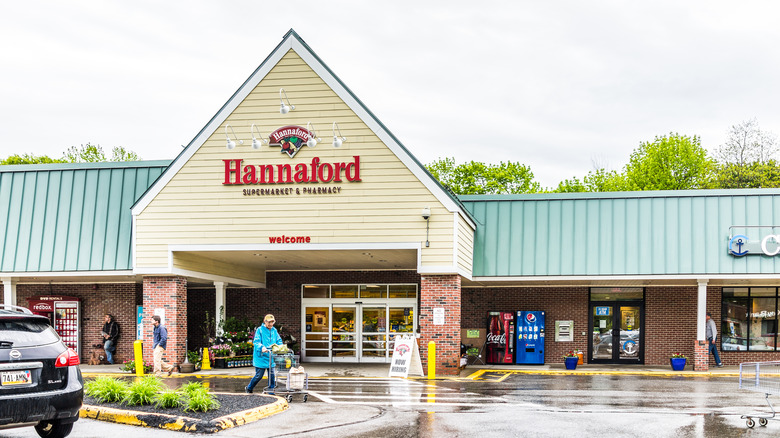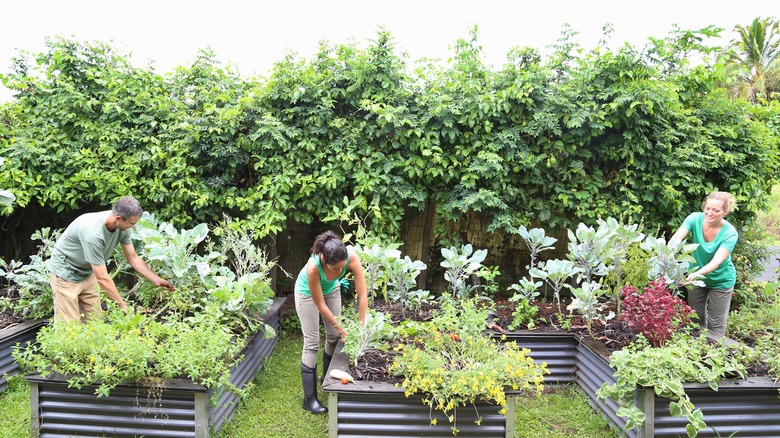The Greenest Grocery Stores In America
It ain't easy being green and yet despite that, Americans are trying! Being green seems to be on everyone's mind and in everyone's heart. So much so, that sustainability is among the most important factors for consumers when choosing a grocer. This makes sense with the looming threat of a major climate crisis and an increased environmental awareness ... and where better to put our money where our mouth is than in our grocery stores and on our plates?
It doesn't make the decision-making process any easier though what with modern problems like greenwashing, an especially deceptive marketing strategy where a brand or company appears more sustainable than it actually is. It can be hard to tell what looks like a green alternative and what really is one. To paraphrase the advocate for true blue slow living, Walt Whitman, it contains multitudes. This list provides 11 different grocers and details the aspects that make them the sustainable choice, and the not-so sustainable drawbacks that these grocers might have. In this grand quest for a greener world, it's all about progress, not perfection!
Whole Foods
For many, green grocery shopping is synonymous with Whole Foods. It's the United States' largest organic and natural food chain, and has even extended beyond national borders into the U.K. and Canada. The chain whose name evokes high-quality produce prioritizes local products, while also integrating harder to come by natural products. What's more is that Whole Foods places emphasis on food waste redistribution, and hasn't sold plastic bags since 2008 (via Waste Today Magazine and the New York Times). Sounds like a green paradise, right? There are certainly more than a few reasons why Whole Foods has solidified such a presence both in day-to-day shopping and even pop culture.
This giant of good foods isn't without its faults and stumbles. In 2016, there was a viral Twitter backlash to the store's $5.99 peeled and pre-packaged oranges which were criticized as hypocritical and wasteful (via CBS News). That isn't to say the reviews were completely negative, some of those with chronic illness argued that the option to have a peeled orange would make the snack more accessible. While ultimately sparking a discussion, Whole Foods pulled the oranges, though it still offers other prepackaged fruits. Another thing to bear in mind is that while Whole Foods' brand is still very much eco-oriented, it was acquired by Amazon in 2017. For some, that may be hard to reconcile with the grocer's once hallmark greenness.
MOM's
Founded in the '80s, MOM's has become a case study for organic grocery stores. Literally! Located primarily on the East Coast, with some branches in Pennsylvania, the name MOM's is a sweet nod to the fact that this organic market got its start out of the founder's mom's garage. The original idea behind MOM's was pretty simple: to provide organic foods in a market landscape that didn't offer them. In the last 40 years, Americans and food markets alike have come to embrace organic food to an unprecedented level, but this market's pioneering spirit keeps boldly pursuing new frontiers.
The founder of MOM's is noted as saying that while produce is important, activism and world-view are truly at the center of this corporation (via Baltimore Magazine). Many MOM's stores rely partially, if not completely on renewable energy, there are green incentives for employees, and the company takes many official environmentalist stances publically.
It almost seems like this organic market flits between philosophical ideal and sociological experiment. Nonetheless, the quality of its produce stays high; it is the largest chain grocer that buys local whenever it can and focuses on the highest percentage of organic items compared to any major grocery-chain, while maintaining that 100% of its produce is organic (via ORCA). Not too shabby for a regional chain. Beware, as the Washington City Paper jokingly warns, this grocery and its fans have the tendency to come off as a cult.
Trader Joe's
Another heavy hitter of the mainstream organic grocery, Trader Joe's is beyond well-known: from memes of flirty and cute cashiers and even Trader Joe's influencers, this grocery has been described by Store Brands as the darling of popular culture. It's not hard to understand why, Trader Joe's has a comfortable and laid-back, if not slightly nautical vibe. The Atlantic best described the grocery store in 2012, as something that isn't necessarily supposed to be an organic market, but a grocery store that offers a luxury shopping experience well below Whole Food's major price point. The magazine even went so far as to say that a neighborhood Trader Joe's was a sign for many of being in a "cultured" space.
But there's a lot more to shopping at Trader Joe's. Though a lot of its products are organic and non-GMO, this doesn't necessarily make Trader Joe's green per se. Sure, there are some conscientious aspects to the store: it carries many Fair Trade Certified Products and even donates a considerable amount of would-be food waste to food banks (via Greenstar Project). On the other hand, as noted by the same project, Trader Joe's produces a lot of plastic waste, does not commit to a fully organic store, much less regional products, and carries many ethically questionable goods. There is a sign that these critiques are not falling on deaf ears, as Trader Joe's has committed to taking on change, like incorporating plastic-free wrapping (via The Kitchn).
Aldi
Unlike Trader Joe's, green or trendy might not be the first thing that's associated with Aldi. But this German discount grocer has been making strides that firmly establish itself if not green, well on the way to becoming a majorly sustainable global chain. Aldi U.S. has been recognized by the EPA as a "green power leader" (via Super Market News). The discount grocer earned this prestigious title partially due to its commitment to incorporating renewable energy into its stores all the while exerting less energy on refrigeration. It's worth noting that it was able to do this while also maintaining a low-cost price tag that draws many people in!
This isn't the end of the road for the so-called deep-discount chain. It doesn't take a trained eye to note that these low prices come at a cost for the environment, unnecessary packaging, and cheaper rates offered for products that require mass shipping an environmentally sustainable front does not make.
In a letter released at the end of April 2022, Jason Hart, Aldi's CEO outlined for customers the chain's seriously hefty green goals. Of these, the German grocer wants to completely eliminate all plastic bags in stores come the end of 2023. In the past year, the chain has also increased sustainable packaging by a whopping 62% and partnered with various programs to reduce food and product waste, among other milestones.
Lidl
Another German import, Lidl earns similar brownie points to Aldi. It may even just be a dark horse in the running for greenest grocery store. Though Lidl is prevalent in Europe, it's just starting to gain footing in the States. Food Business News even points out that the grocer's initial launch in 2017 was plagued with a few missteps, like poor location and price selection. After a few tweaks, the chain still has lots of opportunities to hit its stride. Despite just beginning to expand across the East Coast, Lidl has already earned a Retail Sustainability Award (via Produce Business).
Lidl is also known for being a discount grocer that focuses on meeting its customers with extremely low prices. But, what might just be the store's biggest saving grace is its listening capability, as summarized by the previously mentioned Produce Business profile. For one, the grocer took a proactive leap ahead of food waste and created a Too Good to Waste section, where buyers can buy slightly damaged produce at a large discount. This is not only a very visual display of the chain's commitment to using every last drop so to speak, but it could also cut down on food waste before the food is in peril of being thrown away. Lidl has worked on completing several environmental and sustainable certifications, including the Rainbow Alliance Certification which seeks to source chocolate, and coconut oil, among other products ethically. After smoothing out the first bumps, it seems like Lidl is just taking off.
Gelson's Market
On the other side of the country and on the other side of the spectrum, Gelson's Market of Southern California does not shy away from luxury. In fact, it runs to and passionately embraces luxury. It almost feels like its sustainability is partially linked to its commitment to gourmet and refined. But as long as the road leads to Rome, right? Gelson's sustainability happens mainly by straddling the line between luxury and local. Gelson's is a niche grocery store that emphasizes heavily regional goods, such as the West Coast's supremely yummy white maize (via Produce Business).
More so than that, a major philosophy guiding the store is seasonality. It's not only what's growing nearby, but when is it growing, which helps overall energy reduction. Besides high-quality produce, Gelson's also strives for plant-based alternatives and offers a selection of non-plastic wares. The store also reaches out to the community by partnering with Grades of Greens to take students' suggestions on how to be more eco-friendly and post them on their social media (via Supermarket News). While Business Insider lauds Gelson's for primarily focusing on local and organic brands as well as produce, it does criticize the regional chain in a few areas.
For one, it has a price point that is inaccessible to many, and secondly, focuses on a clientele who have long had access to both sustainable and green measures. The hyper-trendy Gelson's might also spell gentrification for struggling low-income areas.
Erewhon Market
California is known for being very health-oriented, so it comes as a no surprise that there is another California-based grocer that ranks among the greenest grocery stores. Garnering so much as a New York Times feature and going viral on Tiktok, it makes sense to pop the trunk and see what's going on with Erewhon Market. It's strange to see that a simple grocery store has earned so much attention and become simultaneously a way for some to earn internet clout. But, if it's going to happen, it's going to happen in the City of Angels!
Ironically enough, this typical L.A. market started off in Boston in the '60s and followed the original owners to their relocation out west (via Modern Retail). Under new management for a few decades, Erewhon Market has blossomed under the zeitgeist of wellbeing and health. But, as exemplified by Trader Joe's, it doesn't do well enough to simply appear one way. The question remains, is Erewhon Market actually sustainable?
According to a 2021 article from the Progressive Grocer, Erewhon Market is a certified B Corps, short for B Corporation. This certification means that the market exercises high environmental and social standards, but there is also a high level of transparency and accountability in the way it conducts its business. It seems for the most part, Erewhon Market hits a certain level of sustainability, but those out West should beware of the high price tag associated with the market, and most likely, its visibility.
HEB
Sustainability isn't only limited to the coasts, at least according to this Texan grocery store. HEB is an acronym short for, and no this isn't Bart Simpson, Howard E. Butt. Shortened mercifully to H-E-B and with the catchy tagline, "Here everything's better," this grocery store has been playing the innovative grocery game for a while –100 years in fact. Yet the Texan chain was named Progressive Grocer's 2010 Retailer of the Year Award, where it was heralded for its unique approach to fresh food, high-quality products, and community involvement. It started out as a family-owned company, and has offered major stock options to its ever-growing number of employees (via Dallas Morning News). Though this may not be environmentally sustainable per se, one could argue that a sustainable approach to employment reflects larger values and keeps a company consolidated in one region.
In the last odd 10 years, the Southern grocer only continues digging its heels into these values. This local chain not only sources from local brands, but even subverts funds from its eco-friendly products to partner with the Texas Parks & Wildlife Foundation to create and initiate conservation projects (via OA online). As noted above, a local approach can lead to real local change. While HEB does focus on Texas-centric and Texas-produced products, there are major concerns, as reported by CBS Austin, about how the chain approaches single-use plastic by way of packaging, wrapping, and bags.
Hy Vee
Similar to HEB, the Midwest Hy-Vee is employee-owned, though by direct stockholders which usually means higher-ups exclusively, and gravitates towards local sourcing. As of late, Hy-Vee has ramped up sustainability efforts, though as Progressive Grocer notes, this is less of a political or philosophical position than a survival strategy for grocers nowadays. Maybe it is when thinking of the future, in this sense that the ends justify the means, or better said, motive. Nonetheless, in 2021 the regional grocery store has come to meet sustainable efforts where it can.
In the last year alone, Hy-Vee has joined the Consortium to Reinvent the Retail Bag, adopted a seafood code of conduct that is in alignment with the U.N. Global Compact, and reimagined storefronts that use a multi-pronged approach to achieve sustainability (via Progressive Grocer, and The Packer). These new chic and on-trend storefronts should, as described by The Packer, put emphasis on fresh and organic produce while appearing sleek and on-trend. Less glamorously, though very important, Hy-Vee seeks to cut down on its overall electricity use and seeks to cut down food waste as drastically as it has energy-use, as outlined by the Progressive Grocer.
As time passes and the chain grows, it is trying to meet sustainability where it can. As Hy-Vee expands beyond the Midwest and into other regions though, it may be harder to manage its environmental footprint. Hopefully, it keeps up the good work and keeps pushing onwards.
Hannaford
Yet another H name, Hannaford delivers the goods up in the Northeast. Though erring more on the traditional side, Hannaford has made, similarly to Hy-Vee, definitive moves towards sustainability. For starters, this grocery store is seriously committed to reducing food waste to a complete zero, full stop. Its approach, as per Progressive Grocer, is multipronged and in partnership with the EPA. It's perhaps one of the most innovative food waste plans out there to date.
The grocer attempts to deliver non-perished or nonperishable food waste to those who are food insecure through Feeding America, ensuring that the food that can still be enjoyed will make it to those who otherwise would not have it. Produce and perishable goods that would otherwise end up in a landfill are funneled to Agri-Cycle, an organization that attempts to turn food into energy and liquid fertilizer that is then redistributed into the local farm system. Though Hannaford doesn't exclusively stock organic or source locally, it is a mighty thing that the food that is being sold to the grocer is used one way or the other.
It is worth noting, that in areas such as seafood, Hannaford does attempt to source ethically (via Greenpeace). There are still problems with distribution say, with, canned tuna which is often detrimental to the environment. Nonetheless, with the sort of boldness and effectiveness of its last major milestone, Hannaford's next major sustainability goal of 100% renewable energy by 2024, is if not currently within reach, doable.
Community Shared Agriculture / Community Gardens
There is something to be said about meeting needs right where they are. Community shared agriculture, often shortened to CSA, are where farmers offer shares of their harvest to clients. This share is usually delivered in a box loaded up with vegetables, fruits, and sometimes other goodies like bread and cheeses among other treats (via Local Harvest). For a monthly (or weekly or annual) subscription, buyers receive a box delivered or picked up on a timely schedule. It functions a lot like any other subscription box. Community shared agriculture has the benefit that it allows for farmers to receive money for their goods without having to go through a middleman, i.e., grocer. This also allows consumers to build relationships with local farms, that may or not be organic depending on preference, and reduce their food's footprint.
Though farms typically deliver just about everywhere, there is a notorious phenomenon of American food deserts that plague many cities. Partially to combat this and partially through their own long history, community gardens in urban spaces have found new growth to meet these nourishment needs. It's a bonus that most community gardens don't require as pricey a membership as CSAs. Though largely dependent on regional growing seasons and patterns, community gardens provide a place for locals to purchase and/or participate directly (via Greenleaf Communities). Whatever the way, it is possible to find the greenest option even without a green thumb.
